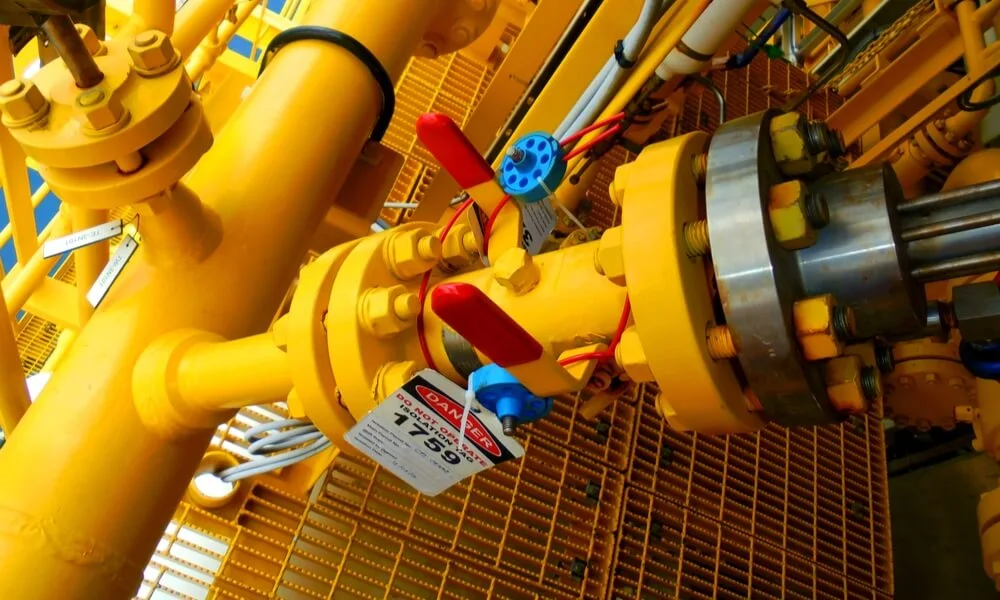Lockout/tagout (LOTO) procedures are instrumental in ensuring the safety of workers, especially in industrial settings where the risks associated with machinery and equipment are high. As the intricacies of machinery grow, so does the need for a diverse range of devices designed to protect workers from these potential hazards.
This blog delves into 12 different LOTO devices that are indispensable in today’s workplaces. Whether you’re a seasoned safety professional or just stepping into workplace safety, this comprehensive guide will arm you with the tools to safeguard workers from unexpected energizations or startups. Join us as we navigate the world of LOTO devices, unraveling their importance and application.
Importance Of Lockout Tagout Devices
Lockout/tagout (LOTO) devices are critical tools in maintaining the safety of workers in various industrial and maintenance environments. Their importance can be appreciated from multiple dimensions:
- Prevention of Unexpected Startups: One of the primary purposes of LOTO devices is to prevent machinery or equipment from unexpected startups. An accidental start can lead to catastrophic results, especially when a worker performs maintenance or is inside a machine.
- Protection Against Electrical Surges: LOTO devices can protect workers from unexpected surges in electrical power, which can lead to electric shocks or burns.
- Avoidance of Energy Release: Many machines store energy, whether electrical, mechanical, hydraulic, or pneumatic. LOTO devices ensure that this energy is isolated and cannot be unintentionally released, posing a danger to workers.
- Clear Communication: Tagout devices, in particular, provide clear communication about the status of a machine or system. They can indicate why a system is shut down, who is responsible for it, and when it was shut down.
- Compliance with Regulations: Many countries and regions have strict regulations around machinery and worker safety. Using LOTO devices is often a legal requirement to ensure worker safety and help businesses avoid hefty fines and legal consequences.
- Protection Against Chemical Exposures: In industries where chemicals are processed or used, LOTO devices can ensure that pipes, valves, and containers are properly shut off, preventing the unintended release of potentially hazardous materials.
- Reduction in Workplace Accidents: Proper use of LOTO devices significantly reduces the number of workplace accidents. This ensures worker safety, less downtime, fewer compensation claims, and a better work environment.
- Encouraging a Culture of Safety: The presence and regular use of LOTO devices underscore the importance of safety in the workplace. They help inculcate a culture where safety is paramount, and every worker looks out for their own well-being and that of their colleagues.
- Economic Benefits: While safety is the primary concern, there are also economic benefits. Fewer accidents mean less downtime for machines and reduced costs related to injury treatments, legal issues, or machinery repairs.
- Universal Application: LOTO devices are versatile and can be used across various industries, from manufacturing and construction to utilities and services. This universality emphasizes the broad recognition of their importance in ensuring worker safety.
In summary, LOTO devices are essential in modern industry, ensuring workers can carry out their duties safely and efficiently. Their presence protects valuable human resources, promotes a culture of vigilance, and ensures the seamless operation of machinery and equipment.
Lockout Tagout Devices
Lockout/Tagout (LOTO) is a safety procedure primarily used in industrial settings to ensure that machinery and equipment are properly shut off and not unexpectedly started up, which could lead to injuries. LOTO devices prevent the accidental release of hazardous energy while equipment is serviced or maintained.
1. Padlocks
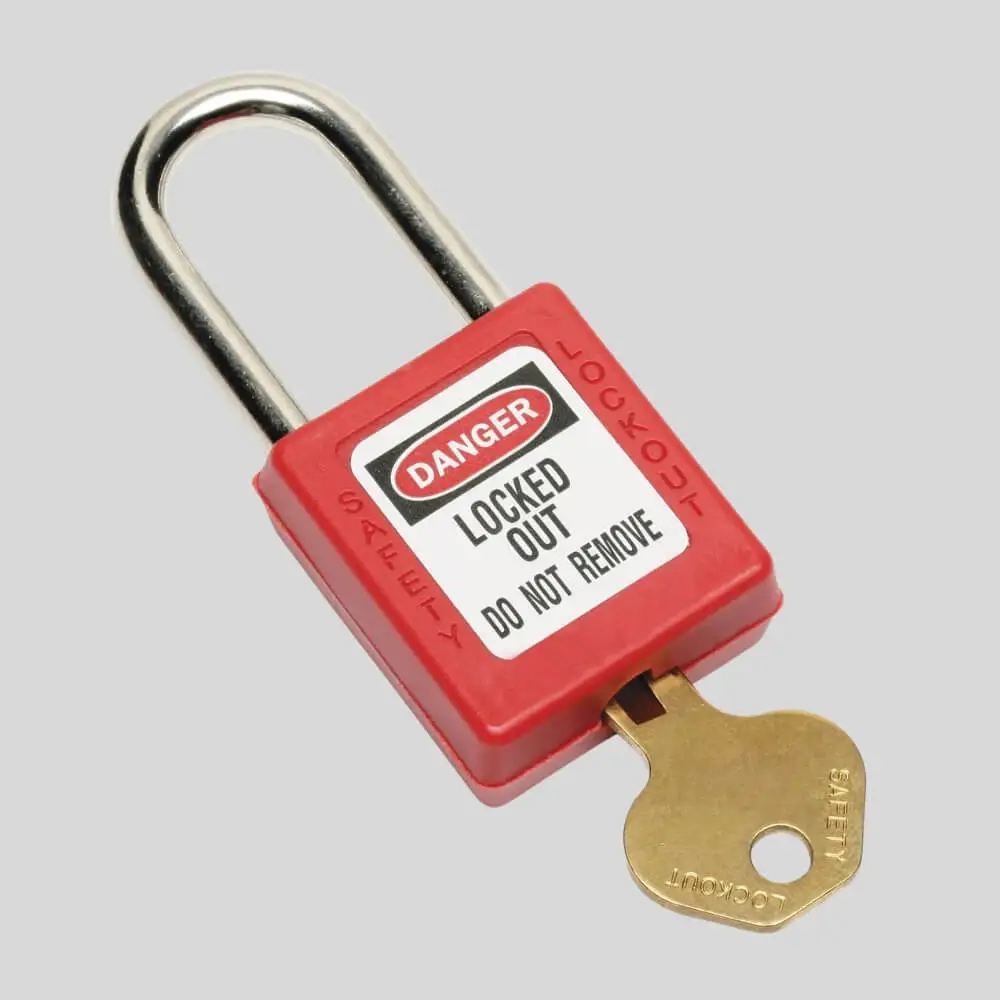
Padlocks serve as the most basic lockout devices. Each padlock has its unique key, ensuring individualized control. Only the person who has placed the lock – usually the worker conducting the maintenance or repair – possesses the key, thereby preventing unauthorized removal. Beyond merely locking out equipment, these padlocks typically bear identification labels.
These labels display the name or photograph of the user and carry warnings, stressing the peril of removing the lock or operating the equipment. This feature serves a dual purpose: it communicates who is working on the equipment and visually warns against accidental operation.
2. Lockout Hasps
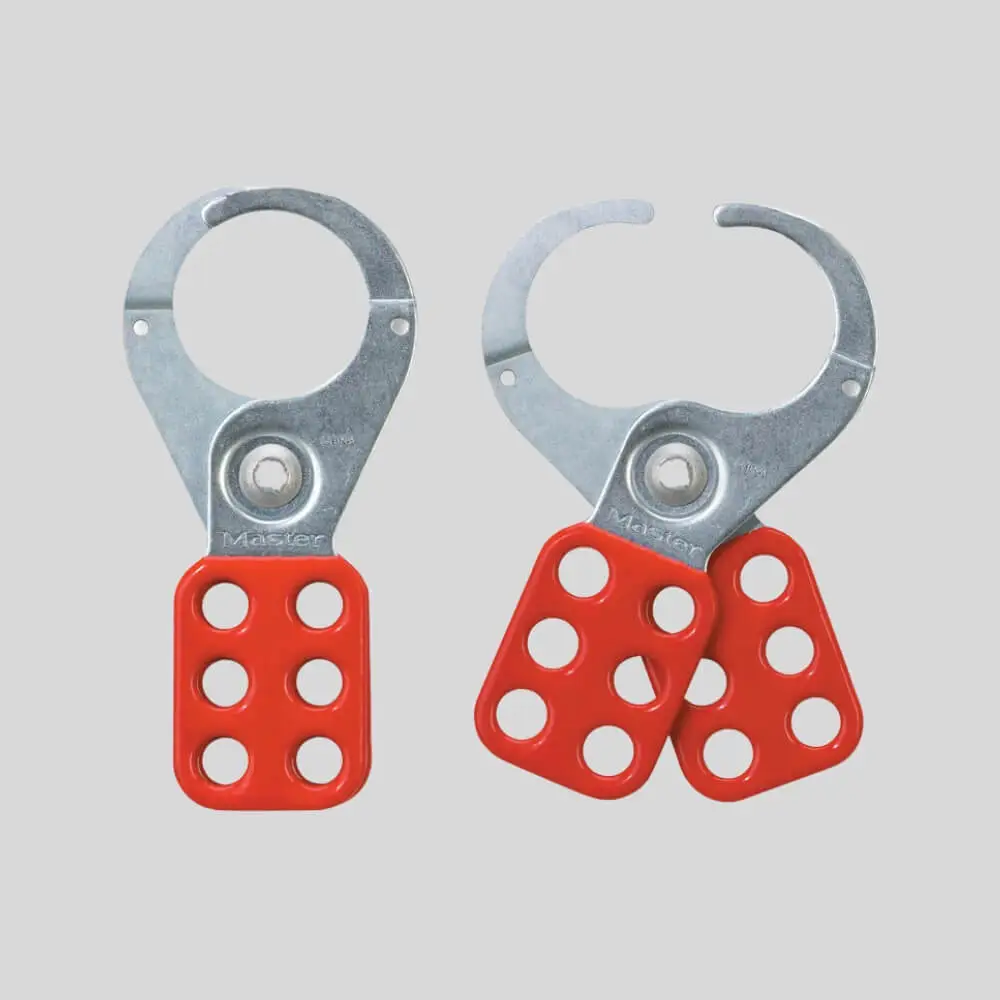
In scenarios where multiple technicians or engineers are servicing a single piece of machinery, lockout hasps come into play. These devices are constructed to accommodate several padlocks simultaneously on a single energy-isolating point.
The design ensures that a single worker cannot inadvertently re-energize the system, as the equipment remains inoperable until each worker has concluded their tasks and subsequently removed their individual locks. This collaborative safety measure ensures that every person’s safety is accounted for and respected.
3. Tagout Tags
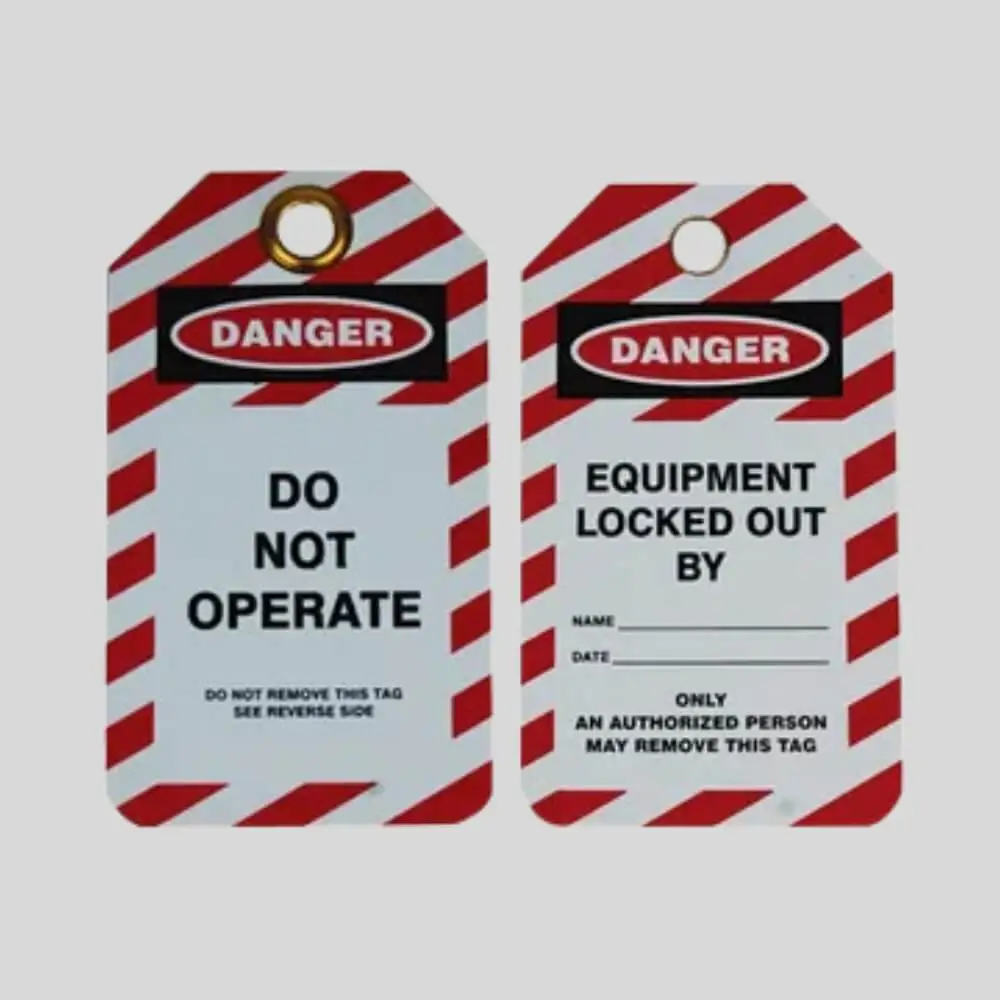
While locks physically prevent equipment from re-energizing, tagout tags communicate critical information. These durable tags, securely affixed close to the lockout point, explicitly indicate that the machinery must not be operated.
In addition to this warning, tags often detail the specific reasons for the lockout, the responsible technician’s identity, and the lockout date. This information reinforces the lockout’s significance and keeps all personnel informed.
4. Electrical Lockout Devices
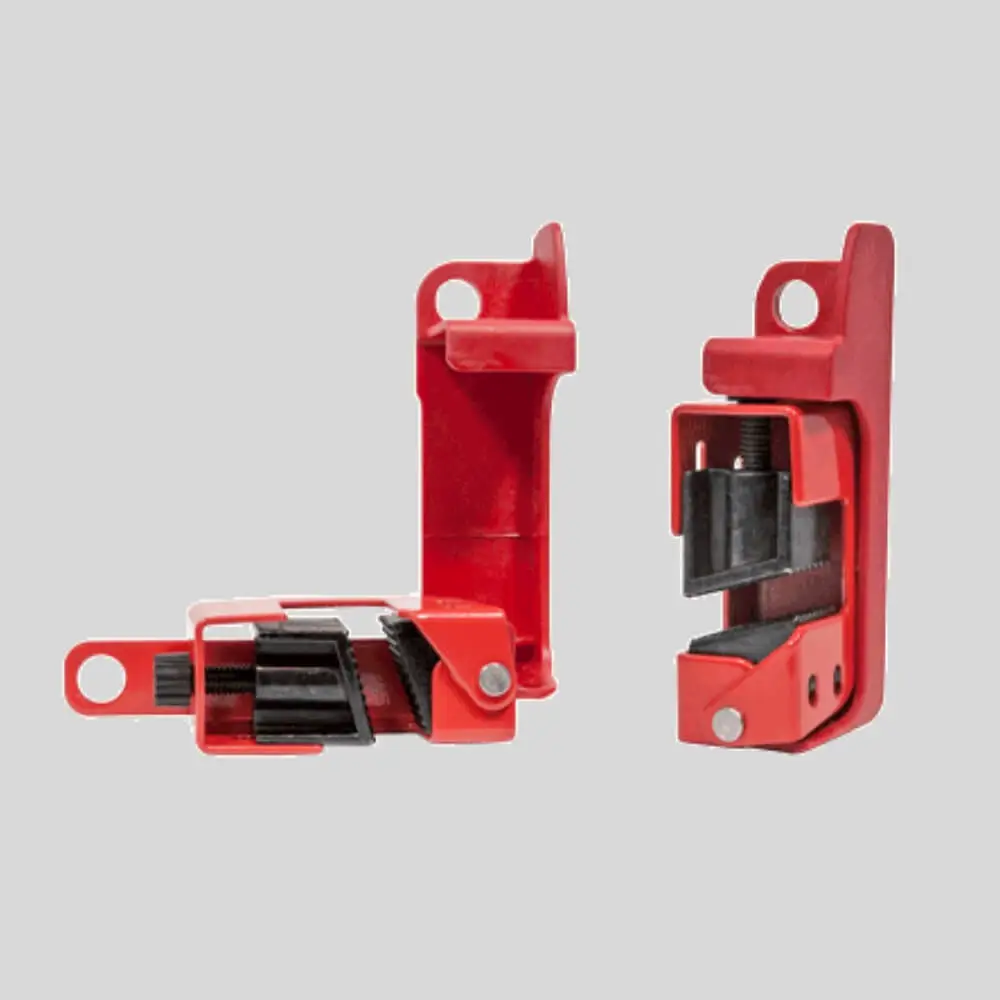
As the name suggests, electrical lockout devices cater to electrical energy sources. Among these, circuit breaker lockouts stand out. They are engineered to prevent circuit breakers from being reactivated after switching off. This ensures that unexpected power surges are not risky while maintenance is ongoing.
On the other hand, electrical plug lockouts act as protective casings that encompass the plug of electrical apparatuses, rendering them impossible to connect to a power outlet. Lastly, switch lockouts are designed to secure wall switches in their current state, whether in the “on” or “off” position, guaranteeing that the switch’s state cannot be altered.
5. Valve Lockout Devices

Unlike their electrical counterparts, these devices are dedicated to isolating mechanical energy sources, primarily fluid or gas flow. Gate valve lockouts, for instance, are crafted to encompass and immobilize the wheel mechanism of a gate valve.
Their design ensures the valve cannot be turned once in place, halting the flow. Similarly, ball valve lockouts shield the lever of ball valves. By doing so, they ensure that the valve remains in its intended position, be it open or closed, and cannot be tampered with.
6. Cable Lockout Devices
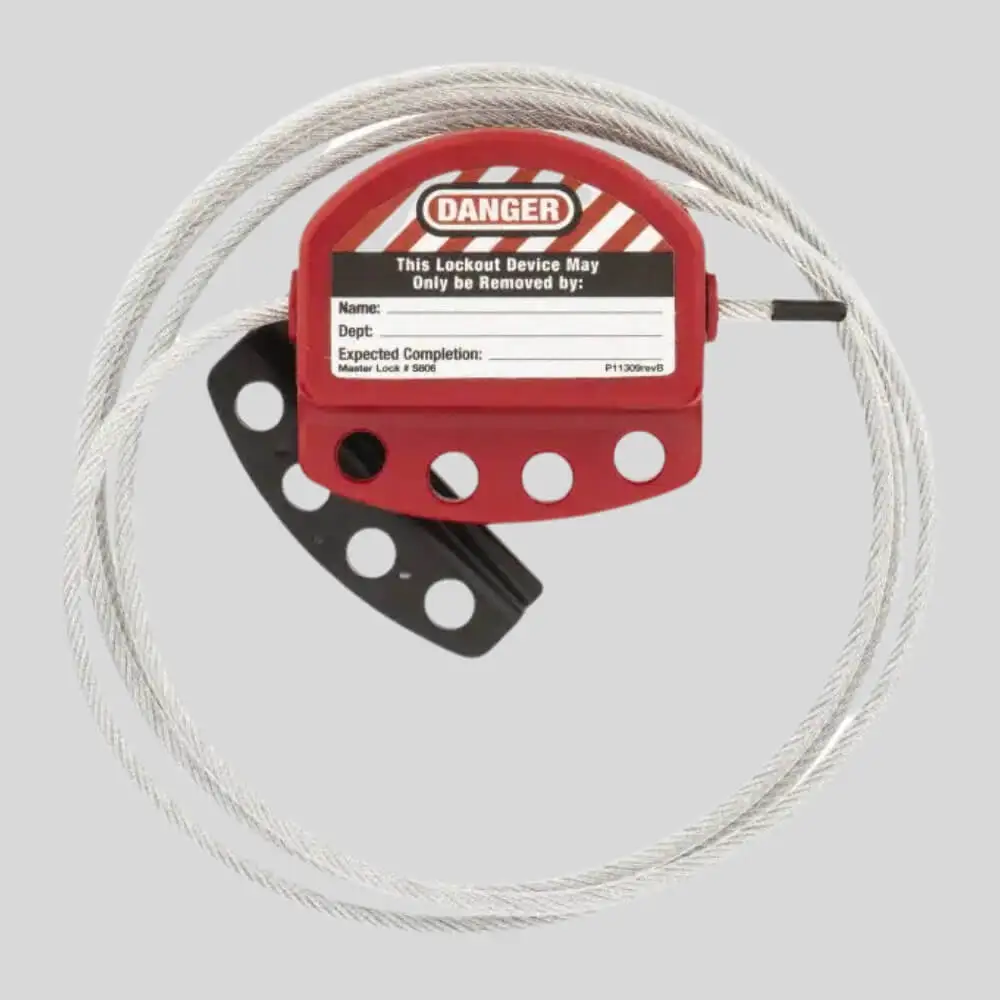
Boasting versatility, these devices employ a pliable cable that can be threaded through various energy isolation points. This can range from the handles of diverse valves to the toggles of multiple circuit breakers.
Once threaded, the ends of the cable are secured, rendering the equipment safe. Their adaptability makes them suitable for situations where traditional lockouts may not suffice, or multiple isolation points must be secured simultaneously.
7. Steering Wheel Lockout Devices

These devices serve an invaluable role in vehicle maintenance. By locking onto the steering wheel of a vehicle, they ensure that the vehicle remains stationary during repairs or maintenance. This protects the person working on the vehicle and prevents potential damage or accidents resulting from unintended movement.
Especially useful in scenarios where brake work or transmission repairs are taking place, these devices act as a clear visual and physical barrier against unauthorized use or accidental movement of the vehicle.
8. Flange Lockout Devices
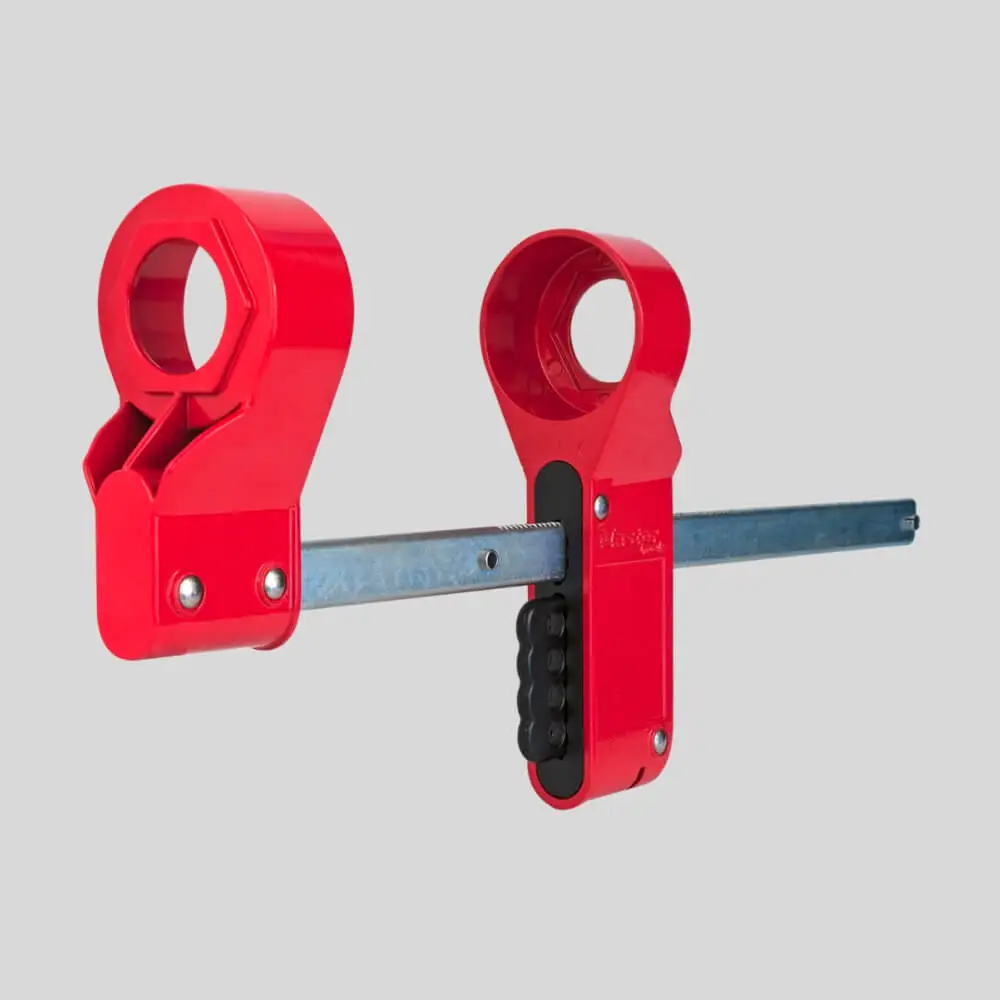
Pipelines, especially those transporting hazardous or pressurized materials, pose significant risks if tampered with. Flange lockout devices target this risk by preventing access to the bolts on pipeline flanges. By doing so, they ensure that the pipeline cannot be unintentionally or inappropriately opened during maintenance.
This device is particularly crucial in industries where pipelines carry gases, chemicals, or other volatile materials, ensuring the safety of workers and preventing potential environmental hazards.
9. Gas Cylinder Lockout Devices
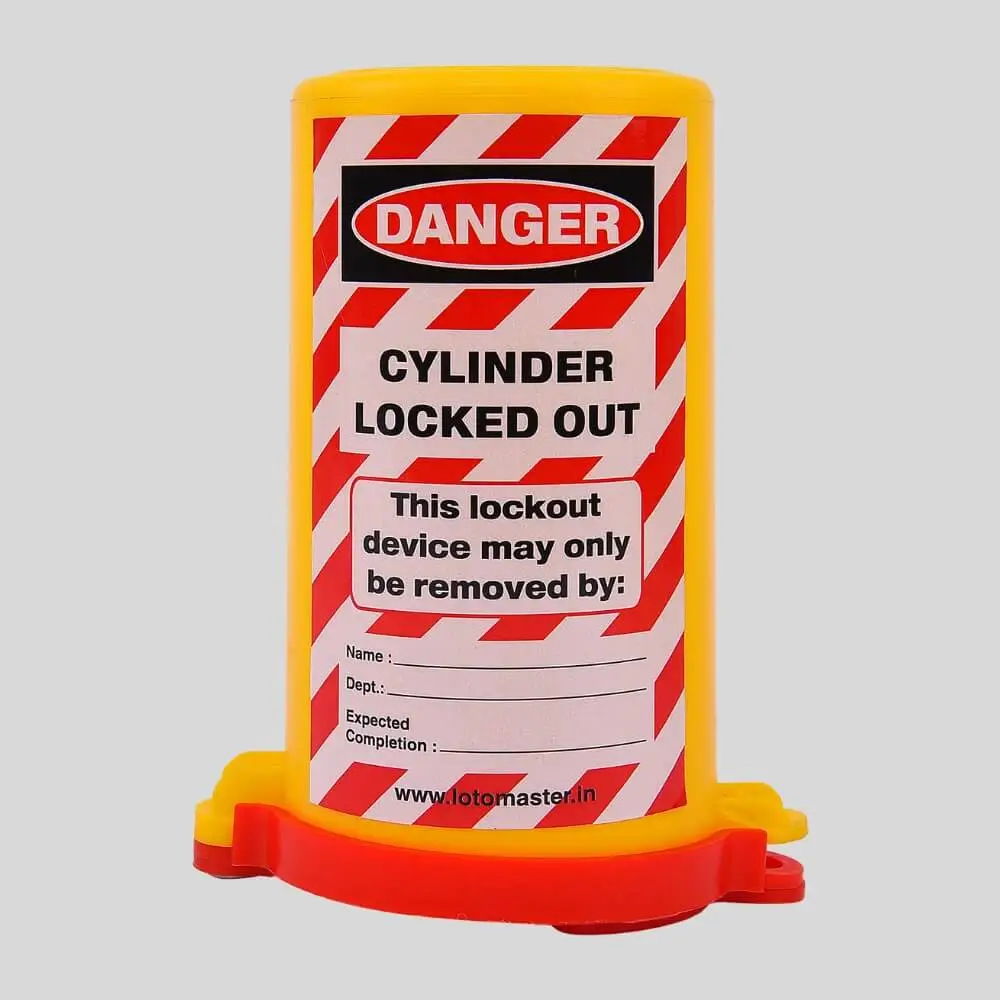
Gas cylinders containing inert or reactive gases can be hazardous if their contents are unintentionally released. The gas cylinder lockout devices are crafted to encase the main valve handle on these cylinders.
By preventing access to the valve, they ensure that the gas within the cylinder remains contained. This not only prevents potential accidents resulting from the release of the gas but also ensures that the integrity of the gas is maintained for its intended application.
10. Pneumatic Lockout Devices
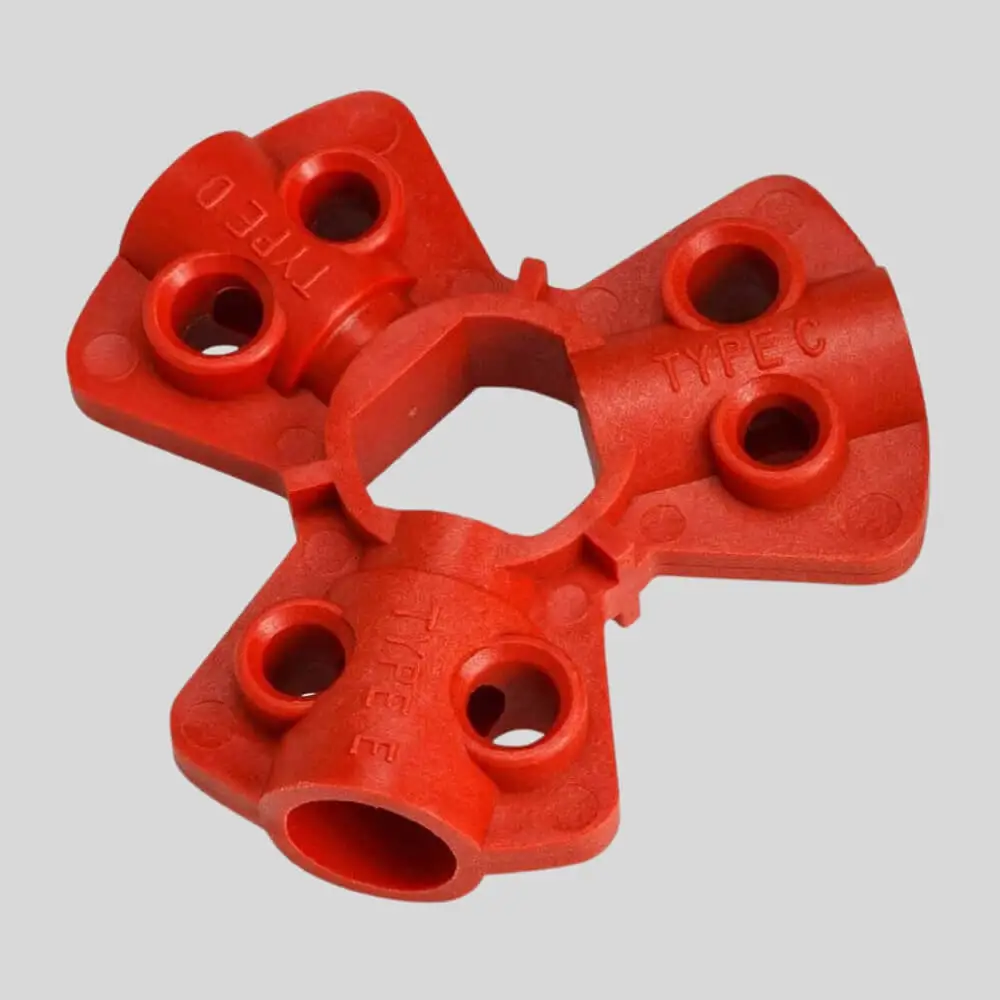
Many industrial machines are powered by pneumatic energy, using compressed air to drive motion or accomplish tasks. Pneumatic lockout devices are tailored to secure these pneumatic energy sources.
These devices provide safety during maintenance or servicing by ensuring that machinery cannot be accidentally powered by compressed air. They prevent unexpected startups of machinery, which could lead to injuries or equipment damage.
11. Group Lockout Boxes
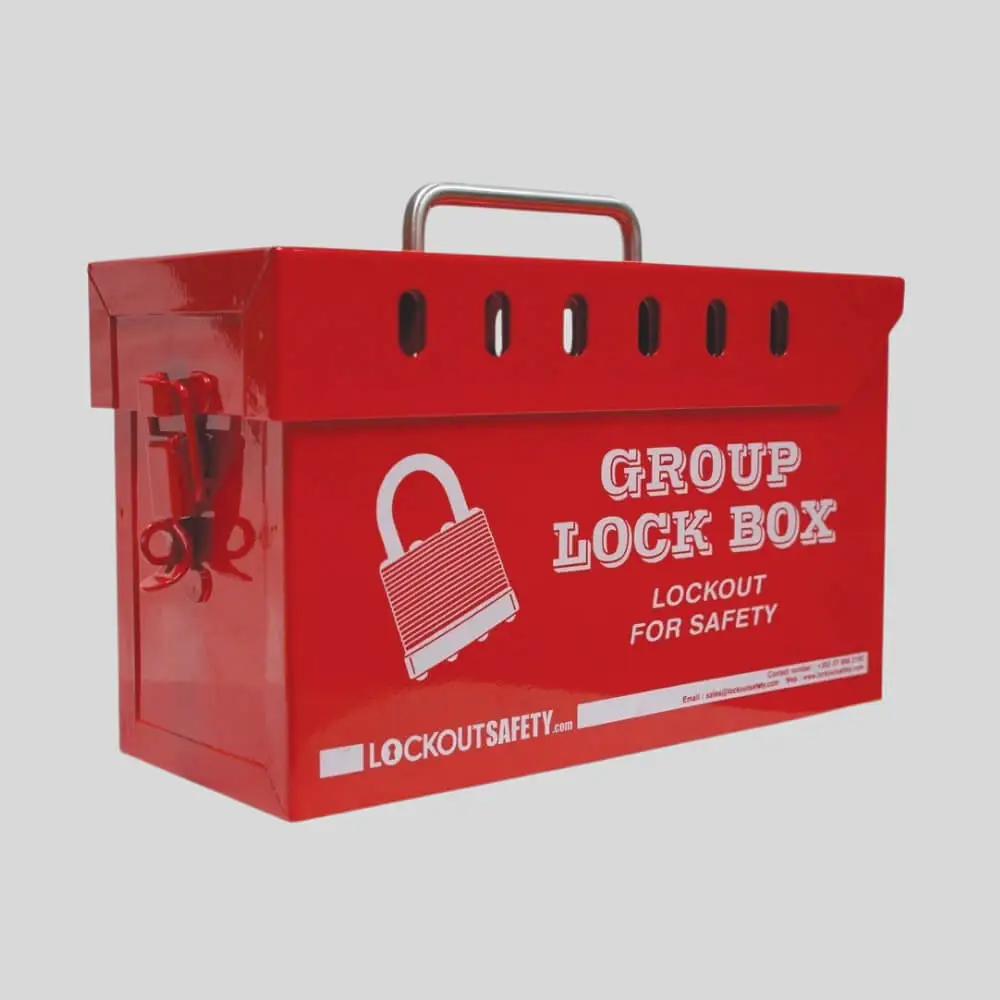
Group lockout boxes are indispensable when multiple individuals work on a single piece of equipment. The principal idea is that the key to the primary energy-isolating device, such as an electrical switch or a valve, is secured within this box.
Each technician or worker then places their padlock onto the box, sealing the key inside. This collective approach ensures that the equipment remains de-energized and inaccessible until every worker has finished their task and removed their padlock, emphasizing collaborative safety and accountability.
12. Lockout Stations & Kits
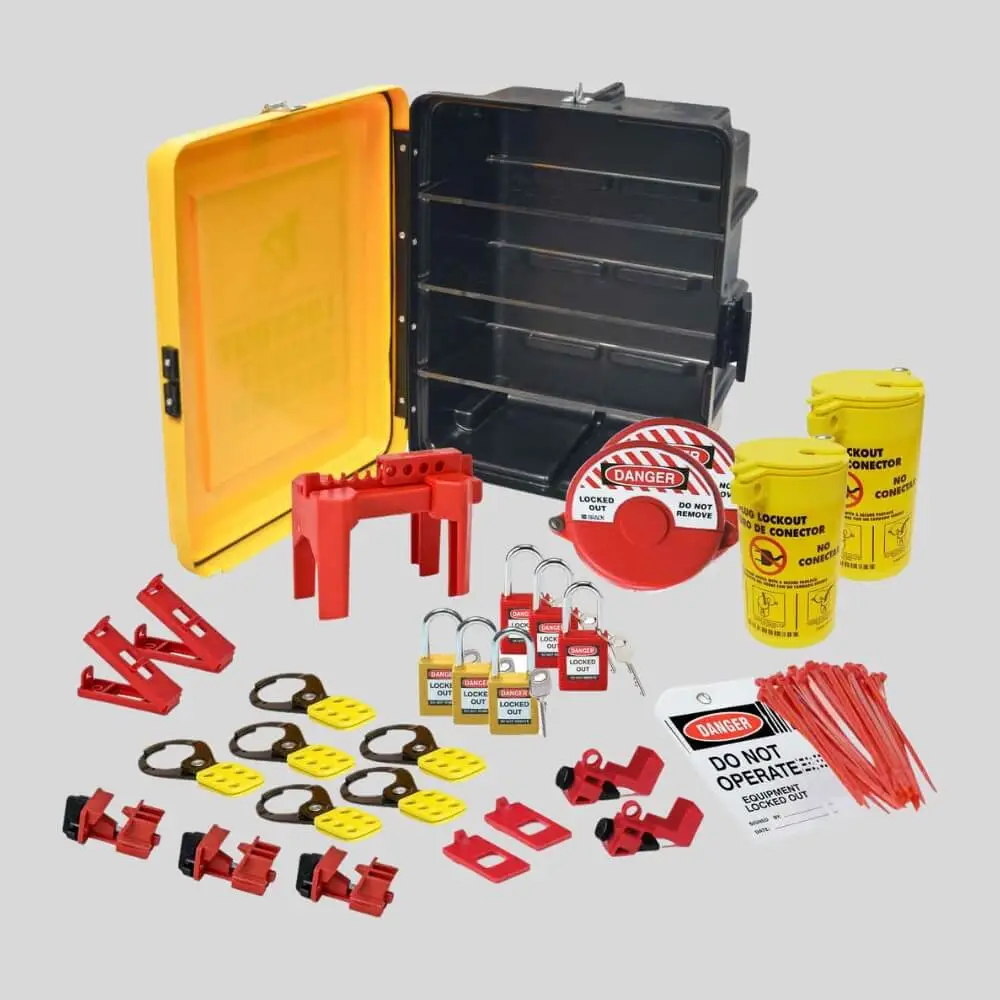
Streamlining the lockout/tagout process, lockout stations and kits are centralized repositories for all necessary LOTO devices relevant to a specific zone or facility. Often mounted on walls or other easily accessible locations, they offer quick access to equipment, ranging from padlocks to tags to specialized lockout devices.
Their presence reinforces the importance of safety procedures and makes initiating the lockout/tagout process quicker and more efficient. In many industries, having a well-stocked and organized lockout station is a hallmark of commitment to worker safety and operational excellence.
Conclusion
In the dynamic realm of industrial safety, understanding the various lockout/tagout devices is paramount. These 12 essential LOTO devices we’ve explored exemplify the advancements in safety technology and underscore the industry’s commitment to protecting its workforce. Each device serves as a guardian, ensuring machinery remains non-operational during critical maintenance or repair work, reducing the chances of accidents.
As we continue to push the boundaries of industrial progress, it’s comforting to know that robust systems are in place to safeguard those who power our industries. Equipped with this knowledge, safety professionals, equipment operators, and facility managers can now approach machinery-related tasks with greater confidence and assurance. Remember, a well-implemented LOTO system doesn’t just comply with regulations; it saves lives and fosters a culture of safety and responsibility.

